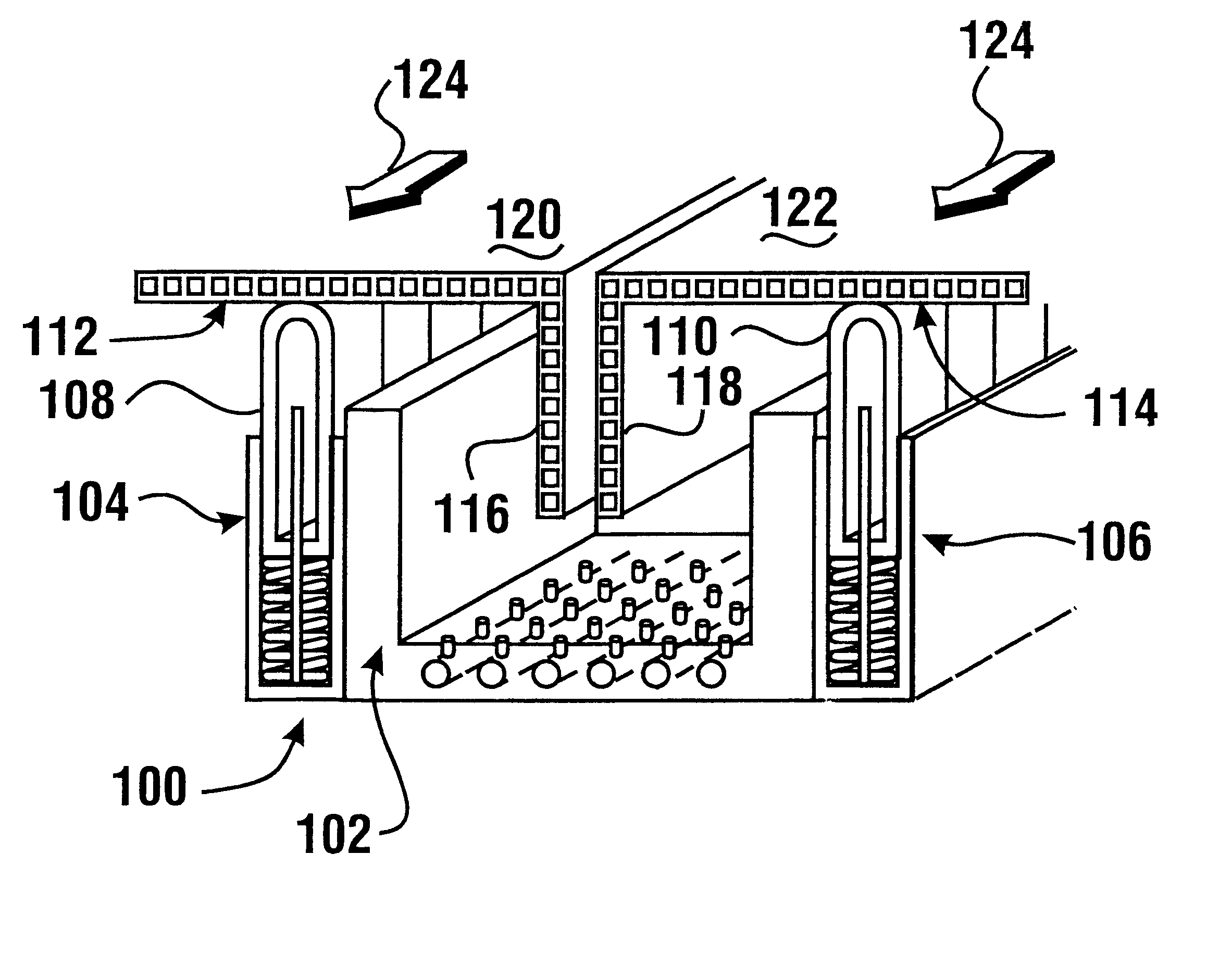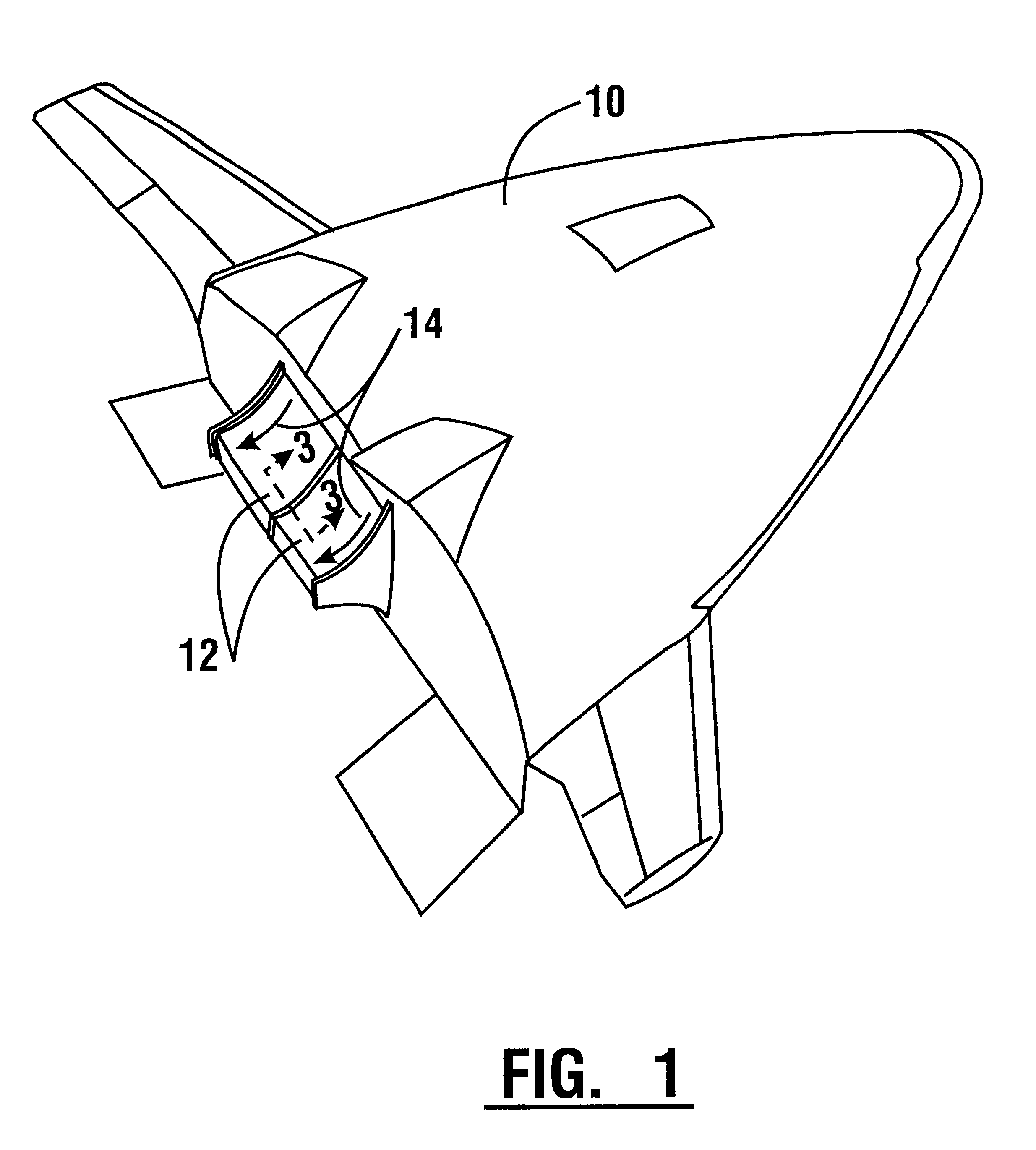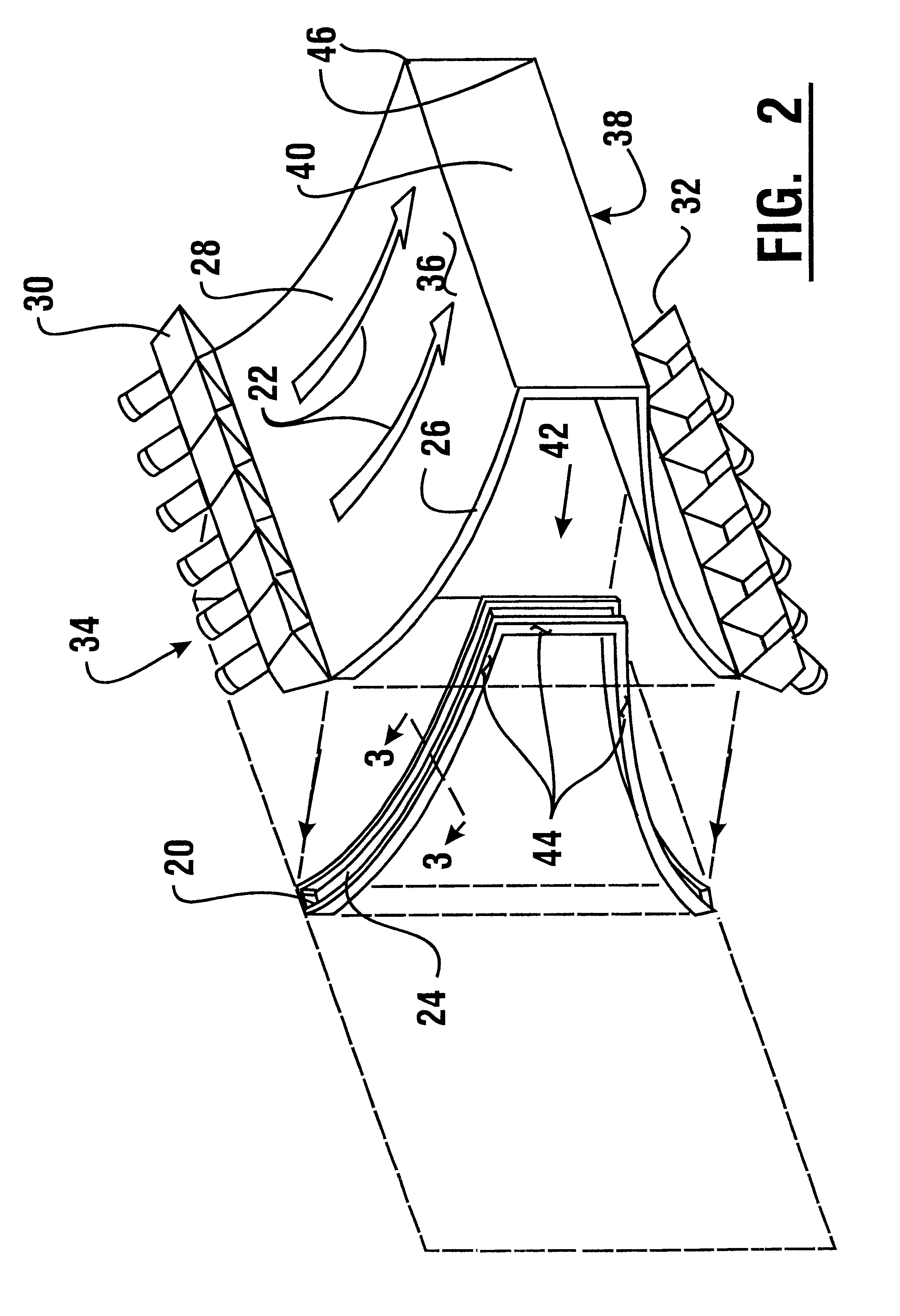High temperature seal for large structural movements
a high-temperature sealing and structural technology, applied in the direction of marine propulsion, vessel construction, cosmonautic thermal protection, etc., can solve the problems of gap opening, displacement of up to several inches between adjacent elements, damage or loss of vehicles, etc., and achieve the effect of preventing leakag
- Summary
- Abstract
- Description
- Claims
- Application Information
AI Technical Summary
Benefits of technology
Problems solved by technology
Method used
Image
Examples
Embodiment Construction
Referring now to the drawings and particularly to FIG. 1, there is shown therein a perspective view of an exemplary reusable launch vehicle 10 which includes an exemplary embodiment of a sealing system of the present invention. The vehicle 10 includes two or more rocket nozzle thrust-directing structures 12 which are alternatively referred to herein as ramps. The propulsion and maneuvering of the vehicle is achieved by controllably directing thruster flow schematically represented by arrows 14, across the ramps 12. The vehicle includes a sealing system between adjacent engine ramps to prevent hot (approximately 4,000.degree. F.) thrust gases from leaking through the gaps between adjacent ramps. The turbomachinery for supplying fuel to the rocket engines and other equipment is located behind these thrust-directing ramp structures. In addition, portions of oxygen and hydrogen fuel lines and tanks may extend into the areas within the vehicle behind these ramps. The exemplary sealing st...
PUM
 Login to View More
Login to View More Abstract
Description
Claims
Application Information
 Login to View More
Login to View More - R&D
- Intellectual Property
- Life Sciences
- Materials
- Tech Scout
- Unparalleled Data Quality
- Higher Quality Content
- 60% Fewer Hallucinations
Browse by: Latest US Patents, China's latest patents, Technical Efficacy Thesaurus, Application Domain, Technology Topic, Popular Technical Reports.
© 2025 PatSnap. All rights reserved.Legal|Privacy policy|Modern Slavery Act Transparency Statement|Sitemap|About US| Contact US: help@patsnap.com



